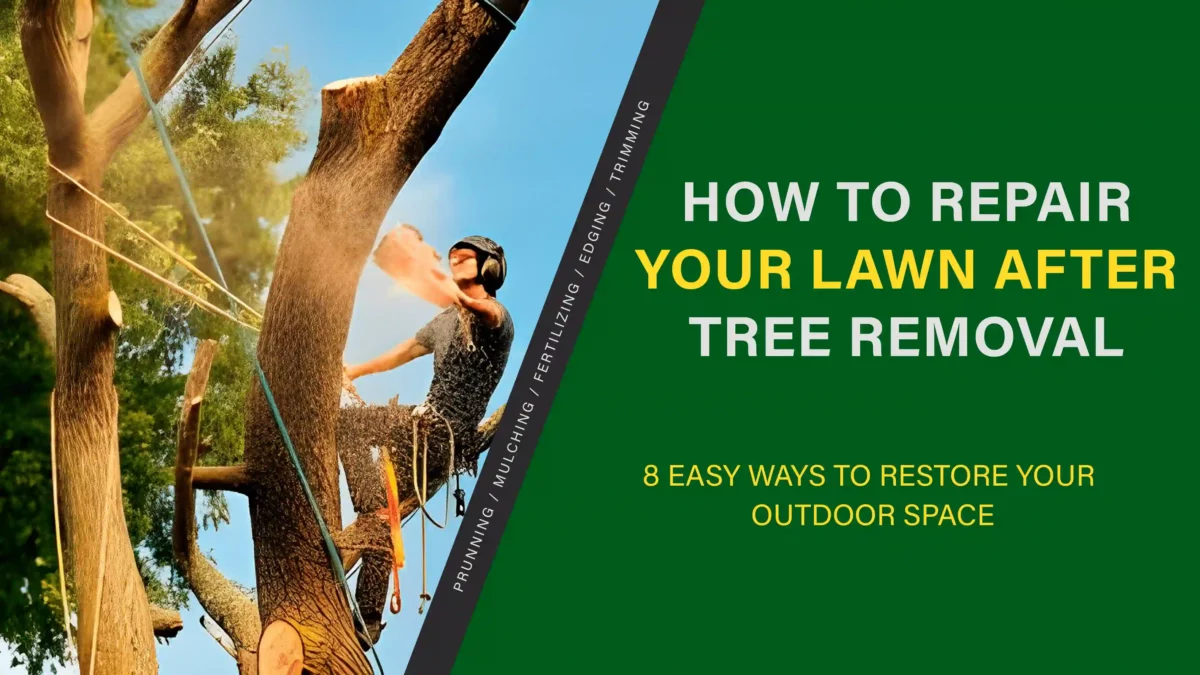
How to Repair Your Lawn After Tree Removal – 8 Easy Ways
If you’ve recently removed a tree from your lawn, you may be left with an area that requires some repair. The process of recovering your lawn after tree removal doesn’t have to be complicated. In fact, there are eight easy ways to restore your lawn and make it beautiful again.
Here are the eight most straightforward methods to repair your lawn after tree removal:
1. SOD
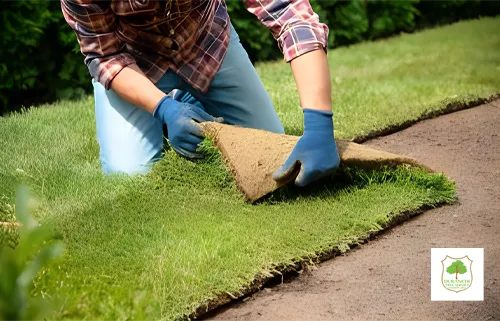
Using sod is one of the most common methods used to maintain your grass. Sod quickly greens and lushes up the area where the tree originally stood.
2. Root and Stump Removal
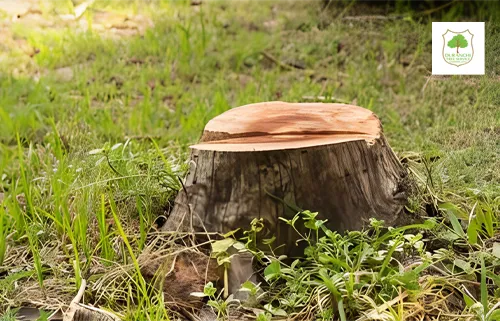
After tree removal, it is important to remove the roots and stump from the ground. This procedure can be executed manually or, for larger stumps, with the help of a tree root removal machine. Removing the debris provides a clean surface for successfully repairing your lawn.
3. Deep Root Fertilization
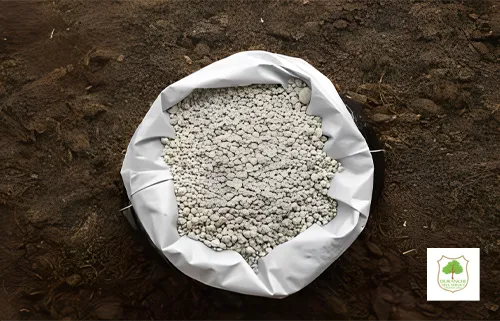
After removing the tree, the surrounding soil may have been depleted of essential nutrients. Deep root fertilization injects nutrients directly into the soil, promoting healthy grass growth.
4. Bracing and Cabling
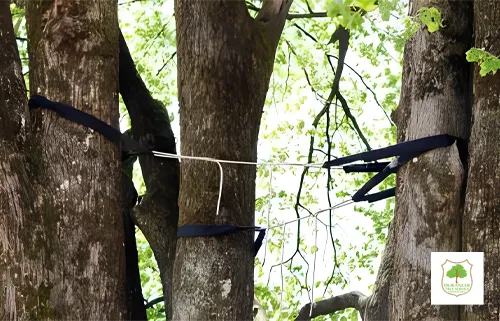
If the tree removal causes any damage or ruts in your grass, bracing and cabling may help in repairing these areas. These strategies give the lawn more assistance, minimizing further harm and improving speedy recovery.
5. Lawn Indent Repair
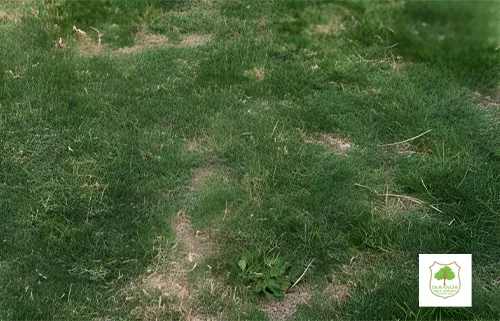
If the tree roots caused indentations in your lawn, you can repair them easily by filling the depressions with soil and compacting it. This will restore the overall evenness of your lawn.
6. Adding Limestone
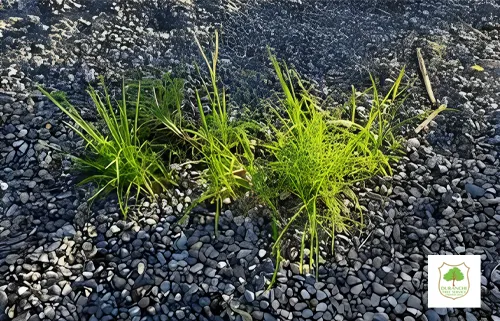
Cutting tree roots in the dirt can sometimes lead to an increase in soil acidity. By adding limestone to the affected areas, you can balance the pH levels of the soil, allowing for healthy grass growth.
7. Reseeding the Area
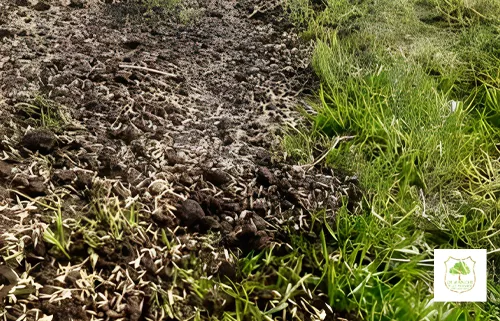
If there are bare patches after tree removal, reseeding the area can help in regrowing grass. Make sure to choose the appropriate seed for your region and follow proper watering and care instructions.
8. Watering the Soil and Caring for the New Grass
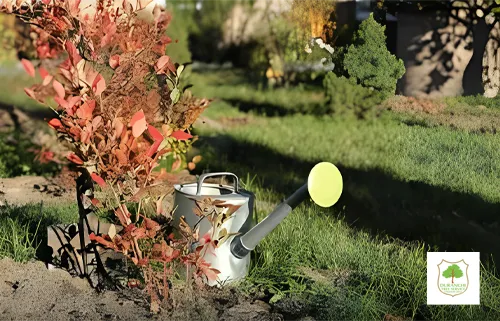
After repairing your lawn, it’s important to water the soil regularly and care for the new grass. Watering ensures proper establishment, growth, and maintenance of the newly repaired lawn.
In addition to the eight easy ways mentioned above, there are other aspects to consider when dealing with tree removal and lawn repair. Clean up after stump removal is necessary for aesthetic reasons and to remove any potential hazards. Properly filling a stump hole ensures a level ground and prevents accidents.
It’s important to note that tree removal can cause damage to the surrounding area. Damage such as broken tree stumps, ruts in the lawn, and dead bush removal could require additional attention. Assessing the damage and addressing each issue individually will help restore your lawn effectively.
If you find yourself in need of assistance repairing your lawn after tree removal, it’s best to consult with professional arborists or lawn care experts. They have the knowledge and expertise to assess the situation and provide tailored solutions to repair your lawn efficiently.
In conclusion, repairing your lawn after tree removal doesn’t have to be overwhelming. By following these eight easy ways and addressing other aspects of tree removal, you can restore your lawn to its former glory. Take the necessary steps, utilize the right techniques, and care for your lawn properly to enjoy a beautiful and healthy outdoor space.
Need assistance repairing your lawn after tree removal? Contact our team of experts for professional guidance and services. We are here to help you bring back the beauty to your outdoor space.
Final Words
Tree removal is a significant task, but the repair and rejuvenation process of your lawn doesn’t have to be. With these easy 8 ways, you can effectively repair your lawn after tree removal and enjoy a vibrant landscape once again. Make sure to prioritize the necessary steps and seek professional help when needed. Take care of your lawn, and it will reward you with its beauty and allure for years to come.
How to Use Wood Chips as Mulch in Your Yard?
Wood chips can be an excellent option for mulching in your yard. They help conserve moisture, regulate soil temperature, suppress weed growth, and enhance the overall aesthetics of your landscape. Here’s a step-by-step guide on how to use wood chips as mulch:
Step 1: Clean the Yard: Before applying wood chips, ensure that the area is free of any debris, weeds, or existing mulch. Removing any existing mulch will prevent the accumulation of unnecessary organic matter.
Step 2: Water the Area: Prior to spreading wood chips, make sure to water the area thoroughly. Moistening the soil will allow better absorption of water and help the wood chips settle.
Step 3: Spread the Wood Chips: Evenly distribute the wood chips over the designated area, creating a layer that is about 2-4 inches thick. Be careful not to pile the wood chips against the base of plants or directly onto the trunks of trees.
Step 4: Pull the Wood Chip Mulch Back: Keep a small gap around the bases of plants or trees to avoid contact between the wood chips and the plant material. This prevents rot and provides better air circulation.
Step 5: Re-apply the Wood Chips: Over time, wood chips may decompose or be displaced due to weather conditions or gardening activities. Reapply wood chips as needed to maintain a consistent layer and reap the benefits of mulching.
Remember, wood chips are an organic material, and as they decompose, they enrich the soil with nutrients. However, avoid placing too thick of a layer, as this can lead to excessive moisture retention and potential issues with root health. By following these steps, you can effectively use wood chips as mulch in your yard and create a beautiful, well-maintained landscape.
Why Is It Necessary to Clean Up After Stump Removal?
Cleaning up after stump removal is a crucial part of the process. Here’s why:
Aesthetics: A tree stump left in your yard can be an eyesore. Removing it improves the overall appearance of your landscape, making it appear more polished and well-cared for.
Safety: Exposed tree roots or sharp remnants from the stump can pose a tripping hazard, especially for children or elderly individuals. Removing them ensures a safer environment for everyone.
Preventing New Growth: If the stump is not properly cleaned up, new shoots or saplings may sprout from the remaining root system. These can be unsightly and result in additional maintenance in the future.
Pest Prevention: Decaying stumps attract insects such as termites, ants, and beetles. Cleaning up after stump removal helps eliminate potential pest infestation and protects your property.
Landscaping Flexibility: Clearing your yard of old stumps allows for greater flexibility in designing and implementing new landscaping projects or features.
With these reasons in mind, it’s essential to clean up thoroughly after stump removal to ensure a aesthetically pleasing, safe, and pest-free outdoor space.
How to Fill a Hole After Stump Grinding and What to Utilize?
Filling a hole after stump grinding is an important step in the restoration process. Here’s how to do it effectively:
Clean and Prepare the Hole: Remove any loose debris or organic matter from the hole and make sure it is free of any rocks or large roots.
Choose the Right Material: Depending on the size of the hole, you have several options to fill it. Common materials include soil, sand, gravel, or a mix of these.
Add Material Gradually: Start by adding a layer of soil or the material you’ve chosen, filling the hole halfway. Compact the filling material gently with a tamper or by hand, ensuring it is level with the surrounding ground.
Moisturize and Repeat: Water the filled area thoroughly to aid in settling and compaction. Add more filling material as needed to bring it to the desired level, considering any shrinkage that may occur.
Final Compaction and Leveling: Once the filling is complete, compact the material again using a tamper or by stepping on it firmly. This step is crucial to avoid any settling or sinking in the future.
Finish with Topsoil or Gravel: To ensure a smooth transition with the surrounding ground, add a thin layer of topsoil or decorative gravel over the filled area for a finished look.
By following these steps and utilizing the appropriate materials, you can effectively fill a hole after stump grinding, restoring the integrity and appearance of the landscape.
What Kinds of Damage Can You Expect After Tree Removal?
Tree removal can result in various types of damage to your property. Here are some potential damages you might encounter:
Ruts in the Lawn: Heavy machinery used during tree removal can cause ruts or depressions in your lawn, making it uneven and potentially hazardous.
Broken Tree Stumps: In some instances, tree stumps can break during removal, leaving behind fragmented or protruding remnants.
Dead Bush Removal: The removal of a tree can leave behind dead or damaged bushes that need to be properly removed or replaced.
Damage to Surrounding Landscape: Tree removal may impact surrounding plants, hardscape features, or irrigation systems, resulting in damage that needs attention.
Root System Damage: Cutting tree roots in the lawn can affect other plants or trees in the vicinity. Addressing root damage is essential to maintain the overall health and stability of the landscape.
To minimize potential damage, it is crucial to hire experienced professionals who can perform tree removal with precision and care. Additionally, addressing any damage promptly and employing the appropriate restoration techniques can help maintain the integrity of your property.
If you require assistance in repairing your lawn after tree removal or have any questions about the process, feel free to reach out to our team of experts. We specialize in tree lawn repair and can guide you through the steps required for a successful restoration.
Fixing your lawn after tree removal doesn’t have to be a daunting task. With proper techniques and professional guidance, you can revitalize your outdoor space and enjoy a beautiful and healthy lawn once again.



